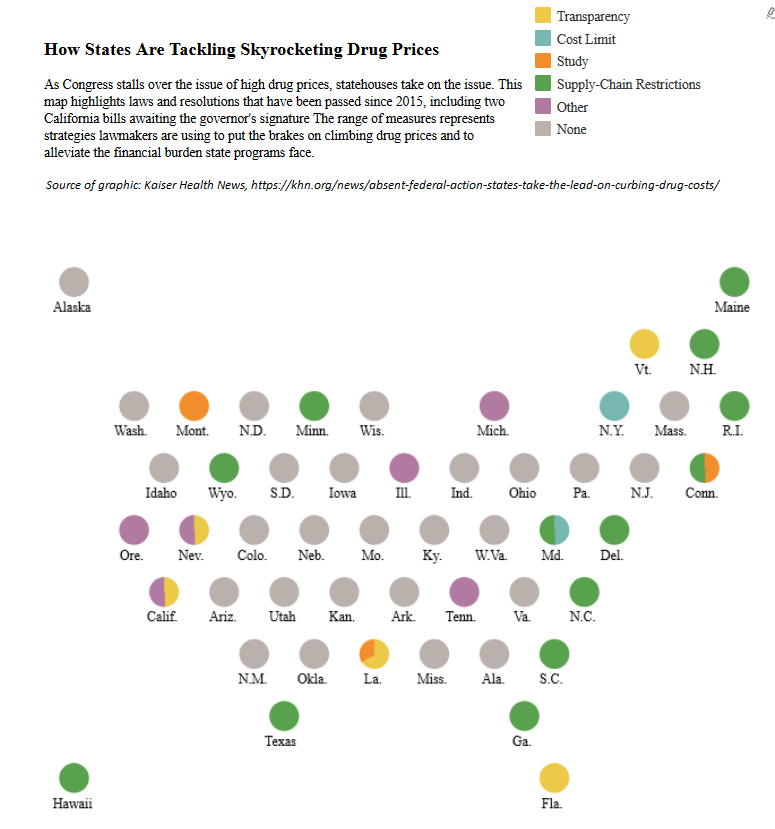In an earlier post, I noted that healthcare will never be affordable without action on prices. With the arrival of the million-dollar pill expected any day, drug prices are a major part of the picture. Little is being done in Washington to rationalize drug pricing, nor would passage of the various failed GOP reform bills have helped much. But there is good news, too. As Kaiser Health News reports, states are taking action where the federal government is not. In this area, at least, the much-touted model of the states as laboratories of reform may actually be working.
State efforts focus on various aspects of the problem of drug pricing. Transparency bills aim to require pharmaceutical companies to detail a drug’s production and advertising costs when they raise prices over certain thresholds. Cost-limit measures would cap drug prices charged by drug makers to Medicaid or other state-run programs, or limit what the state will pay for drugs. Supply-chain restrictions include regulating the roles of pharmacy benefit managers or limiting a consumer’s out-of-pocket costs.
The KHN article gives details and summarizes the state of play with this clever graphic:
